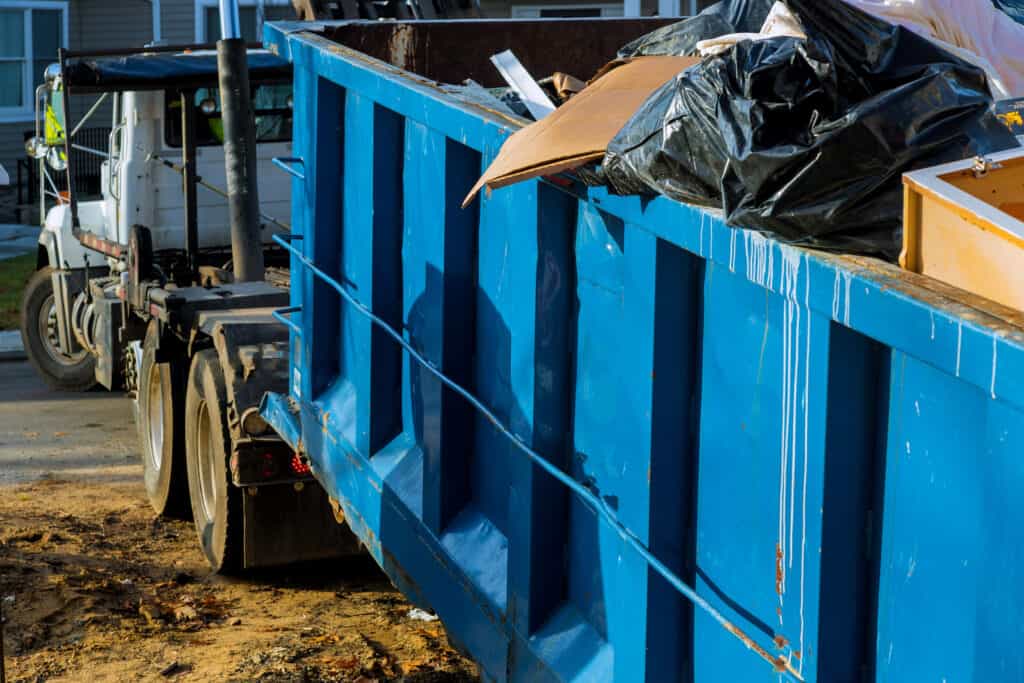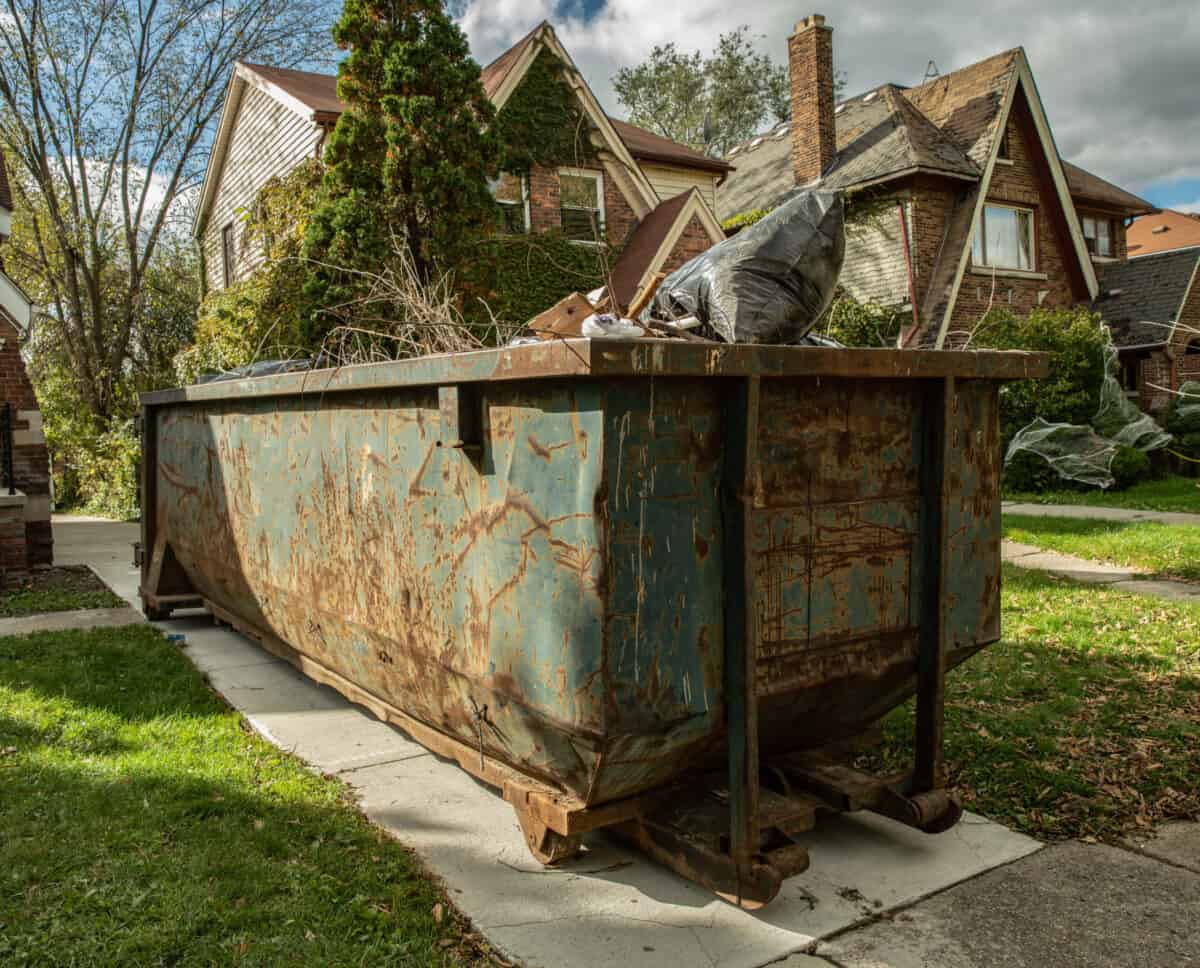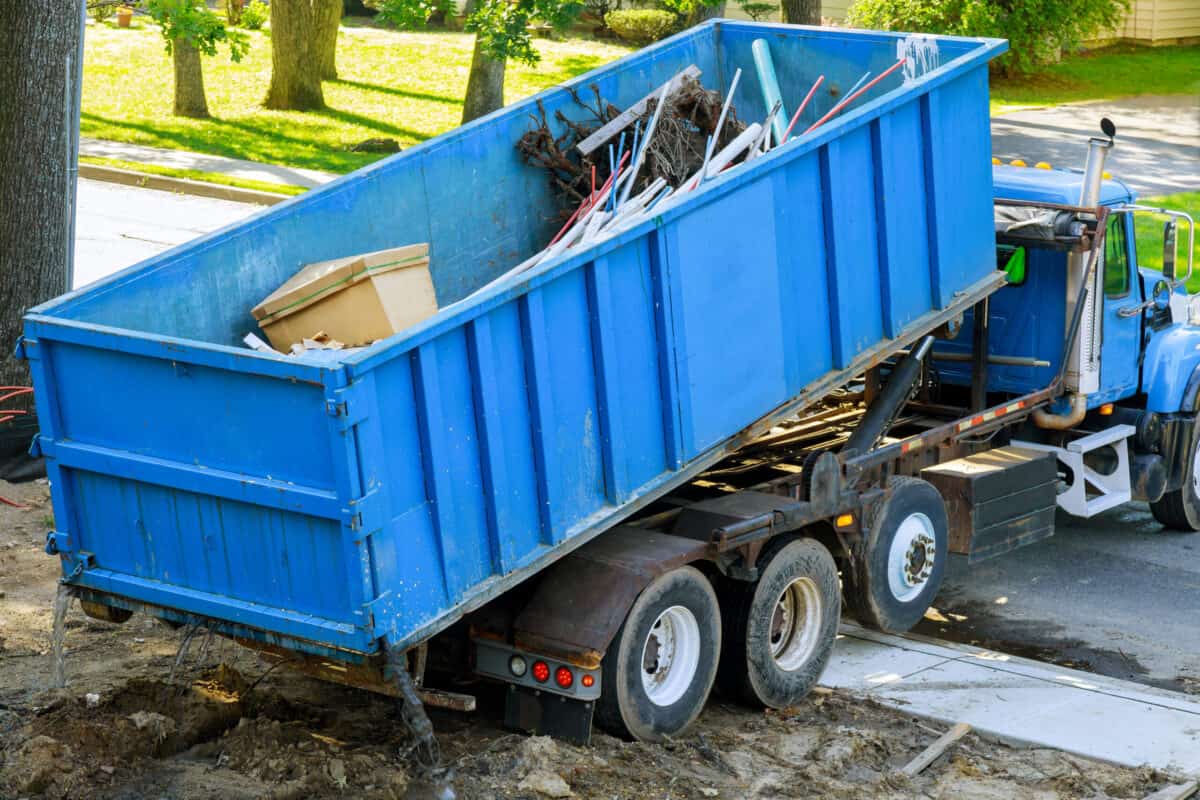Estimate Your Debris Volume
To kick off your dumpster rental journey, start by estimating the volume of debris you need to dispose of. Take a moment to survey the space and consider the types of materials you’ll be tossing. For a small home cleanout, envision the size of furniture, old appliances, or accumulated clutter. If you’re embarking on a landscaping project, factor in the bulk of soil, branches, or any other green waste. Let’s say you’re tackling a renovation—think about the weight and volume of construction materials like drywall, wood, or discarded fixtures. By picturing the items in your mind, you’ll gain a clearer sense of the dumpster size needed.
Consider any potential hidden debris; it’s easy to overlook those miscellaneous items that can quickly fill up space. A good estimate ensures you don’t underestimate and end up needing an additional dumpster or overestimate and pay for unnecessary space. Remember, the goal is to find that sweet spot where you have ample room without overcommitting. So, take a walk through your project mentally, assess the potential waste, and let that guide your decision on the right dumpster size for the job at hand.
Understand Dumpster Sizes
Once you’ve estimated your debris volume, the next step is understanding dumpster sizes to ensure a seamless waste disposal process. Dumpster sizes are typically measured in cubic yards, representing the volume they can hold. For a smaller project, like a garage cleanout or a minor home renovation, a 10-yard dumpster might suffice. Imagine it as holding about three pickup truck loads. If you’re dealing with a more extensive project, such as a large-scale construction site or a complete home renovation, a 20 or 30-yard dumpster could be more appropriate, accommodating the bulkier materials generated.
Consider the dimensions too – visualize the physical space the dumpster will occupy. Will it fit comfortably in your driveway, or do you need to make arrangements for street placement? Understanding the available sizes ensures you’re not stuck with a container that’s too small, leading to overflow issues, or too large, resulting in unnecessary costs. So, match the scale of your project to the corresponding dumpster size, keeping in mind the types of materials you’ll be disposing of. This way, you optimize both space and cost, making your waste management efforts efficient and cost-effective.
Consider the Type of Project
When selecting the right dumpster size, it’s crucial to consider the specific type of project you’re undertaking. Different projects generate varying amounts and types of waste. For instance, if you’re tackling a small home cleanout, a 10-yard dumpster might be sufficient for old furniture, household items, or accumulated clutter. However, if you’re involved in a larger project, like a kitchen renovation, you may need a 20-yard dumpster to accommodate the bulkier debris such as cabinets, countertops, and larger construction materials.
For outdoor projects like landscaping or yard cleanup, consider the volume of green waste—branches, leaves, and soil. In this case, a smaller dumpster might be suitable, such as a 15-yard container. On the other hand, a major construction project, involving demolition or extensive remodeling, might necessitate a larger dumpster, like a 30-yard or 40-yard container.
By tailoring the dumpster size to the specifics of your project, you ensure that you have enough space to dispose of all waste materials without overcommitting to a larger container than necessary. Matching the dumpster size to your project type is a key step in optimizing both efficiency and cost-effectiveness in waste disposal.
Check the Weight Limits
Checking weight limits is a crucial aspect of choosing the right dumpster size for your project. Dumpster rental companies often impose weight restrictions to ensure safe transportation and disposal. It’s not just about the volume of waste but also the density. For instance, if you’re disposing of heavy materials like concrete, bricks, or dense debris from a demolition project, it’s essential to be aware of weight constraints.
Let’s say you opt for a 20-yard dumpster with a weight limit of 3 tons. Exceeding this limit could result in additional charges, as the rental company may need to handle the disposal differently.
To avoid unexpected fees, discuss the weight limits with the rental provider and have a clear understanding of the materials you’ll be disposing of. If your project involves predominantly heavy materials, it might be more cost-effective to choose a larger dumpster with a higher weight limit, preventing potential overage charges.
Carefully assessing weight restrictions ensures that your waste disposal process stays within budget and that you choose a dumpster that can handle the specific materials you plan to dispose of, making the overall experience smoother and more cost-efficient.
Plan for Extra Space
Planning for extra space in your dumpster rental is a strategic move to avoid unexpected challenges during your waste disposal project. While estimating your debris volume, consider the possibility of additional items or unforeseen waste. It’s common for projects to generate more waste than initially anticipated.
For example, during a home cleanout, you might discover more items in your attic or garage than originally thought. Opting for a slightly larger dumpster than your initial estimate provides a buffer, ensuring you won’t run out of space.
In construction projects, unforeseen debris or last-minute changes can occur. Let’s say you’re remodeling a kitchen, and as you dismantle cabinets, you find additional materials that need disposal. Having extra space in your dumpster allows flexibility for such surprises. While it’s essential to be mindful of your budget, strategically planning for a bit of extra room can prevent the need for ordering a second dumpster or incurring extra fees for exceeding the capacity.
It’s a proactive measure that ensures your waste disposal process remains efficient and accommodates any unexpected waste, making the entire experience smoother and more cost-effective.
Simplify Your Waste Disposal
In conclusion, mastering the art of choosing the right dumpster size is pivotal for a successful waste disposal project. By diligently estimating your debris volume, understanding dumpster sizes, considering project specifics, checking weight limits, and planning for extra space, you set the stage for an efficient and cost-effective experience.
Whether it’s a small home cleanout, a landscaping endeavor, or a major construction project, tailoring your dumpster size to the unique demands of your task ensures you have the space you need without unnecessary costs.
Remember, the key is to strike a balance between adequate space and budget considerations. Because you’re armed with the insights from this guide, you’re well-positioned to make informed decisions that streamline the process and contribute to a successful outcome in getting a dumpster rental service.




